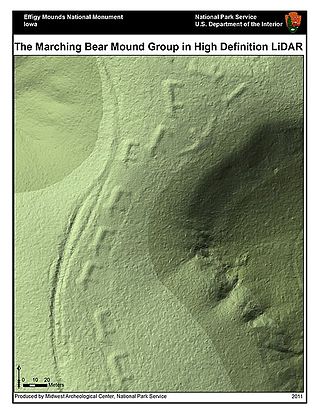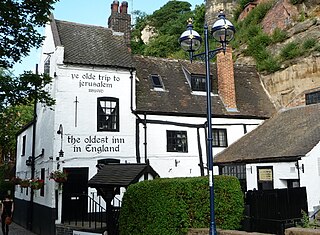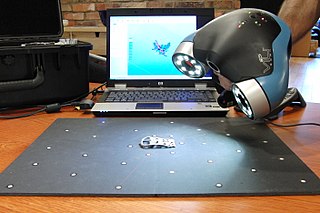Related Research Articles

Sherwood Forest is a royal forest in Nottinghamshire, England. Its peculiar fame arises from its historic association with the legend of Robin Hood.

Nottingham is a city and unitary authority area in Nottinghamshire, East Midlands, England. It is located 110 miles (180 km) north-west of London, 33 miles (53 km) south-east of Sheffield and 45 miles (72 km) north-east of Birmingham. Nottingham has links to the legend of Robin Hood and to the lace-making, bicycle and tobacco industries. The city is also the county town of Nottinghamshire and the settlement was granted its city charter in 1897, as part of Queen Victoria's Diamond Jubilee celebrations. Nottingham is a tourist destination; in 2018, the city received the second-highest number of overnight visitors in the Midlands and the highest number in the East Midlands.

Lidar is a method for determining ranges by targeting an object or a surface with a laser and measuring the time for the reflected light to return to the receiver. LIDAR may operate in a fixed direction or it may scan multiple directions, in which case it is known as LIDAR scanning or 3D laser scanning, a special combination of 3-D scanning and laser scanning. LIDAR has terrestrial, airborne, and mobile applications.

Nottinghamshire is a ceremonial county in the East Midlands of England. The county borders South Yorkshire to the north-west, Lincolnshire to the east, Leicestershire to the south, and Derbyshire to the west. The largest settlement is the city of Nottingham (323,632).

Cannock Chase, often referred to locally as The Chase, is a mixed area of countryside in the county of Staffordshire, England. The area has been designated as the Cannock Chase Area of Outstanding Natural Beauty and is managed by Forestry England. The Chase gives its name to the Cannock Chase local government district. It is a former Royal forest.

Ye Olde Fighting Cocks is a public house in St Albans, Hertfordshire, England. It is one of several pubs that lay claim to being the oldest in England, claiming to have been in business since 793 AD. The pub was once recognized as the oldest in England by the Guinness World Records, but this title was wrested in 2000. The building is described by Historic England as being of 16th-century appearance, but as the earliest date for which it can be proved to have been licensed is 1756, and even that date is not certain, its claim to this record is somewhat uncertain. Others such as the Ye Olde Man & Scythe in Bolton, Greater Manchester, and Ye Olde Trip to Jerusalem in Nottingham may have better claims. Even in St Albans, the White Hart and the Fleur de Lys are believed to have been trading as inns in the late medieval period.

Ye Olde Trip to Jerusalem is a Grade II listed public house in Nottingham which claims to have been established in 1189, although there is no documentation to verify this date. The building rests against Castle Rock, upon which Nottingham Castle is built, and is attached to several caves, carved out of the soft sandstone. These were reputedly originally used as a brewhouse for the castle, dating from the medieval period.

3D scanner is the process of analyzing a real-world object or environment to collect three dimensional data of its shape and possibly its appearance. The collected data can then be used to construct digital 3D models.
Oxford Archaeology is one of the largest and longest-established independent archaeology and heritage practices in Europe, operating from three permanent offices in Oxford, Lancaster and Cambridge, and working across the UK. OA is a Registered Organisation with the Chartered Institute for Archaeologists (CIfA), and carries out commercial archaeological fieldwork in advance of development, as well as a range of other heritage related services. Oxford Archaeology primarily operates in the UK, but has also carried out contracts around the world, including Sudan, Qatar, Central Asia, China and the Caribbean. Numbers of employees vary owing to the project-based nature of the work, but in 2014 OA employed over 220 people.
The first use of 3D laser scanning at Stonehenge was of the Bronze Age dagger and axes inscribed on the sarsens, which was undertaken in 2002 by a team from Wessex Archaeology and Archaeoptics. They used a Minolta Vivid 900 scanner to analyse and record surfaces of the prehistoric and post-medieval carvings.
Laser scanning is the controlled deflection of laser beams, visible or invisible. Scanned laser beams are used in some 3-D printers, in rapid prototyping, in machines for material processing, in laser engraving machines, in ophthalmological laser systems for the treatment of presbyopia, in confocal microscopy, in laser printers, in laser shows, in Laser TV, and in barcode scanners. Applications specific to mapping and 3D object reconstruction are known as 3D laser scanner.

Nottingham is a city in Nottinghamshire, England.

The Hemlock Stone or Himlack Stone is an inselberg on Stapleford Hill at Stapleford, Nottinghamshire, England.

The Bell Inn is a pub in Nottingham, England. Completed from around 1437, it claims, along with Ye Olde Trip to Jerusalem and Ye Olde Salutation Inn, to be the oldest pub in the city. In 1982 the pub became a Grade II listed building.

Ye Olde Salutation Inn is a Grade II listed public house, with parts dating from around 1240, which lays claim to being the oldest pub in Nottingham. The inn also has a claim to being the most haunted pub in the country, one landlord having asserted the presence of 89 resident apparitions. Aside from these claims, it is best known locally for its rock music and has been described by local historian Dave Mooney as "an old fashioned rock and bike pub."
Roaches Grit is a coarse sandstone which outcrops widely throughout the western part of the Peak District of northern England and gives rise to several significant landscape features in the area. Its counterpart in the eastern part of the National Park is the Ashover Grit.

Innes McCartney is a British nautical archaeologist and historian. He is a Visiting Fellow at Bournemouth University in the UK.

The Exmoor Group is a late Devonian to early Carboniferous lithostratigraphic group in southwest England whose outcrop extends from Croyde in north Devon east across Exmoor to Minehead in west Somerset. The group comprises the following formations the:

The Marsoulas Cave in Southwestern France, near Marsoulas in the Haute-Garonne, is a small cave notable for its archaeological wealth, including Paleolithic cave paintings and ornaments from the Magdalenian. It consists of a straight gallery about 100 m (330 ft) long with parietal art along the entire length of the cave. The art includes human and animal figures as well as geometric forms and has been described as being of "profound stylistic originality with few equivalents in the region from the same period". The prehistoric artists who produced these used the varied topography of the cave and ceiling to produce three-dimensional engravings and paintings in scales ranging between 2.2 m (7.2 ft) to tiny miniatures.
References
- ↑ "University of Nottingham archaeologists are mapping the city's caves - Nottingham Post". Nottingham Post. Retrieved 28 November 2014.[ permanent dead link ]
- ↑ "BBC - Laser to scan Robin Hood's prison under Nottingham city". News.bbc.co.uk. 20 April 2010. Retrieved 28 November 2014.
- ↑ "Robin Hood's prison: Uncovering Nottingham's hidden medieval sandstone caves". ScienceDaily. Retrieved 28 November 2014.
- ↑ Bhanoo, Sindya N. (18 May 2010). "Observatory - Researchers Use Laser Technology to Map Caves of Nottingham - NYTimes.com". The New York Times . Retrieved 28 November 2014.